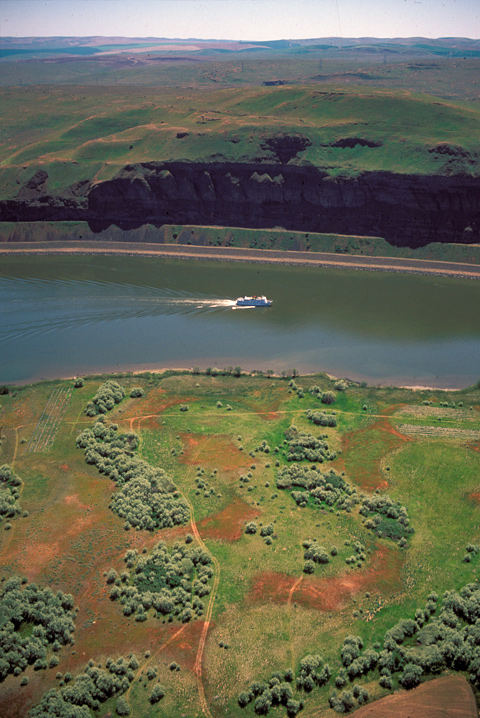Snake River near Pine Tree Rapid
View northeast; river flows right to left
© 2000 Airphoto—Jim Wark.
The boating didn’t improve on 14 October 1805. At the head of a particularly bad three-mile-long rapid, three canoes “Stuk fast for some time . . . and one Struk a rock in the worst part.” At the end of the rapid they went ashore, dined on duck, and proceeded on. At about one o’clock, while passing through a short rapid, one canoe swamped and sank. “A number of articles floated out, Such as the mens bedding clothes & Skins, the Lodge &c. &c.” The occupants of two other canoes retrieved some of the flotsam, and one of the Indian volunteers dove in and saved some other items. Fortunately, the waterproof powder canisters in the canoe were tied down, but the company’s entire store of roots “prepared in the Indian way”–possibly baked camas bulbs–was ruined.
From the day they arrived at the confluence of the Clearwater and Snake Rivers, firewood had been scarce. this day, however, they found a stash some Indians had secured with rocks, and although they had “made it a point at all times not to take any thing belonging to the Indians even their wood,” the temptation was too great to resist, so they took a little of it, as Private Whitehouse put it, “to dress our victuals with.”
Today, once-scanty wisps of willow, never very desirable as firewood, thrive in dense patches along the riverbanks, and diesel-powered cruise ships can come and go on the Snake in no danger of getting “Stuk fast.”
From Discovering Lewis & Clark from the Air
Photography by Jim Wark
Text by Joseph Mussulman
Reproduced by permission of Mountain Press

